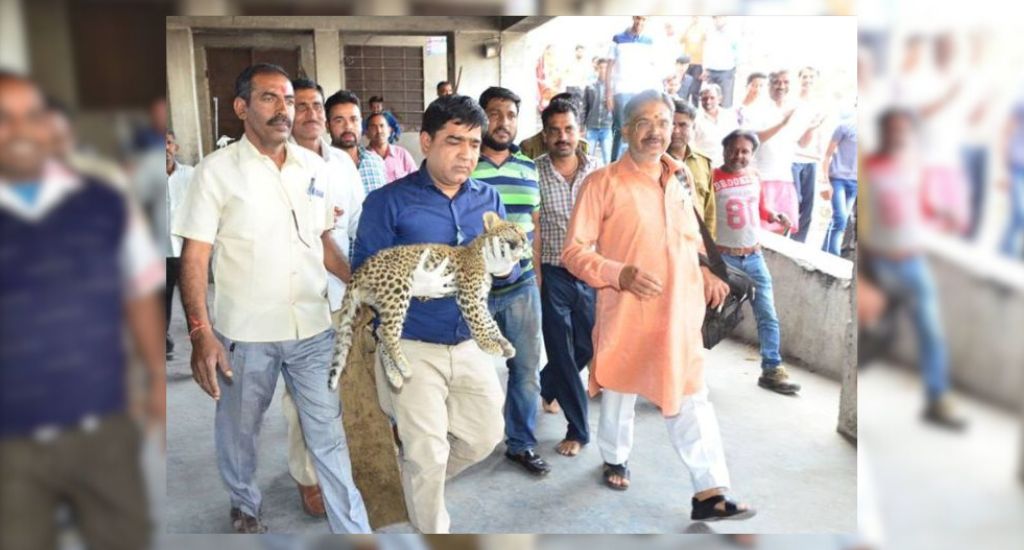
This Jaipur vet risks his life to save wildlife
Dr. Arvind Mathur of Nahargarh Biological Park in Jaipur has rescued 67 leopards in 15 years.

Dr. Arvind Mathur of Nahargarh Biological Park in Jaipur has rescued 67 leopards in 15 years.
Any game hunter would trade his trigger finger to have Dr. Arvind Mathur’s score.
67 leopards, 64 of them males, three Royal Bengal tigers, six elephants and an equal number of crocodiles, two sloth bears, an Indian wolf, 32 hyenas, 17 jackals, and 159 Nilgais, which are among the largest Asian antelopes, weighing as much as 273kg. All in a span of 15 years.
But the 53-year-old veterinarian from Jaipur in Rajasthan aims his gun at the wildlife to shoot tranquilliser darts and rescue the animals from humans – not fire bullets to kill them for sport.
That’s the fundamental difference between his passion and that of a hunter, although both use the same set of stealth, stakeout, and surveillance to stalk and spot their targets, some of whom are masters of camouflage.
The senior wildlife veterinary officer at Nahargarh Biological Park of Jaipur is a sought-after man in the whole of Rajasthan as more and more wild animals are coming into conflict with humans because of urban sprawls expanding into areas that were once wildlife habitats.
The situation in the countryside is no better.

Population growth has brought people closer to wildlife, endangering both humans and animals, particularly leopards. The shy, territorial, tree-climbing big cat has grown in numbers too because of conservation efforts, forcing many to stray into human habitation in search of prey.
Also Read | “India is the guru of tiger conservation”
Mathur has rescued leopards from sand dunes, 70-foot-deep wells, one from a temple’s stairs, and many from cities – such as the one that hid behind timber kept on the third floor of a building under construction after mauling five of a family near Jaipur last year.
“We’re getting more and more exposure to wildlife in urban environments. As we’re changing their habitats, we’ll increasingly come in contact with them,” he had said in an interview.
There are an estimated 14,000 leopards in India, the world’s most populous nation with more than 1.4 billion people. And more than two-thirds of the global population will live in urban areas by 2050, the UN says.
This means rescuers like Mathur will be busier than ever. The leopard is smaller than a tiger, but it’s an apex predator, a versatile hunter.
Mathur is aware of the risks he and his team take every time they embark on a rescue mission.
A leopard once launched at him in one bound after someone aimed a torch at the cornered animal. It caught his right hand, which needed 12 stitches to heal. He wears the scar like a badge of honour – and a reminder “of my close call with death”.
There’s no better satisfaction than saving endangered animals and rescuing orphaned leopard cubs.
Mathur went out that night with a heavily bandaged hand and tranquilised the angry leopard.
Another time, another place. A leopard hiding in sand dunes near Churu charged Mathur’s vehicle thrice and ripped its tyres.
Animal rescues in congested urban spaces often turn into close-combat battles. But Mathur always completes his task, even if it takes hours. It entails a lot of patience because the animal has to be darted only on its right or left hip or shoulder.
“You have to be alert each second,” Mathur said.
Also Read | ‘Wildlife conservation isn’t anti-development’
He has rescued and rehabilitated three cubs at the Nahargarh park and is hoping to “rewild” a fourth female cub in his care. He is living his childhood dream of working with wildlife.

“There’s no better satisfaction than saving endangered animals and rescuing orphaned leopard cubs. But rescuing and rearing an orphaned cub is both heart-breaking and challenging,” he said.
People tend to instinctively react aggressively when they come across something they fear. The same natural instinct applies to wild animals. But even top predators like the leopard stand no chance against a mob of men. Mathur has seen this animal instinct in men.
“When thousands of people surround a leopard, overstressed and shocked, it turns more violent and aggressive. This must stop,” he said.
The planet is losing plant and animal species at an alarming rate. And, for the most part, humans are to blame.
Also Read | Snow leopard conservation brings socioeconomic benefits to Rumbak village
Mathur said it’s more important than ever for teens and young adults to participate in efforts to prevent the extinction of species and spread awareness about the need to find mutually beneficial ways to coexist with nature and help balance ecosystems.
“Educate them on the value of leopards in controlling the Nilgai population that raid and destroy crops,” he said.
The veterinarian is doing his bit. Apart from his vast field experience, he has trained in the UK and South Africa on wildlife conservation. He never tires of telling people the importance of saving the leopard.
Also Read | The fascinating story of a bank manager who caught snakes to save nature
But he knows his task gets harder every time a bit of the animal’s range shrinks from human activity – fragmentation of wildlife habitat corridors due to highways, climate change, unsustainable agriculture, residential and commercial construction.
The lead image at the top shows An injured leopard being carried by Dr Mathur and a helper (Photo by Dr Arvind Mathur)
Usha Rai is a veteran journalist who has worked for the Times of India, Indian Express and Hindustan Times and mainstreamed development issues into news. She is recipient of the Chameli Devi award for outstanding women journalists.